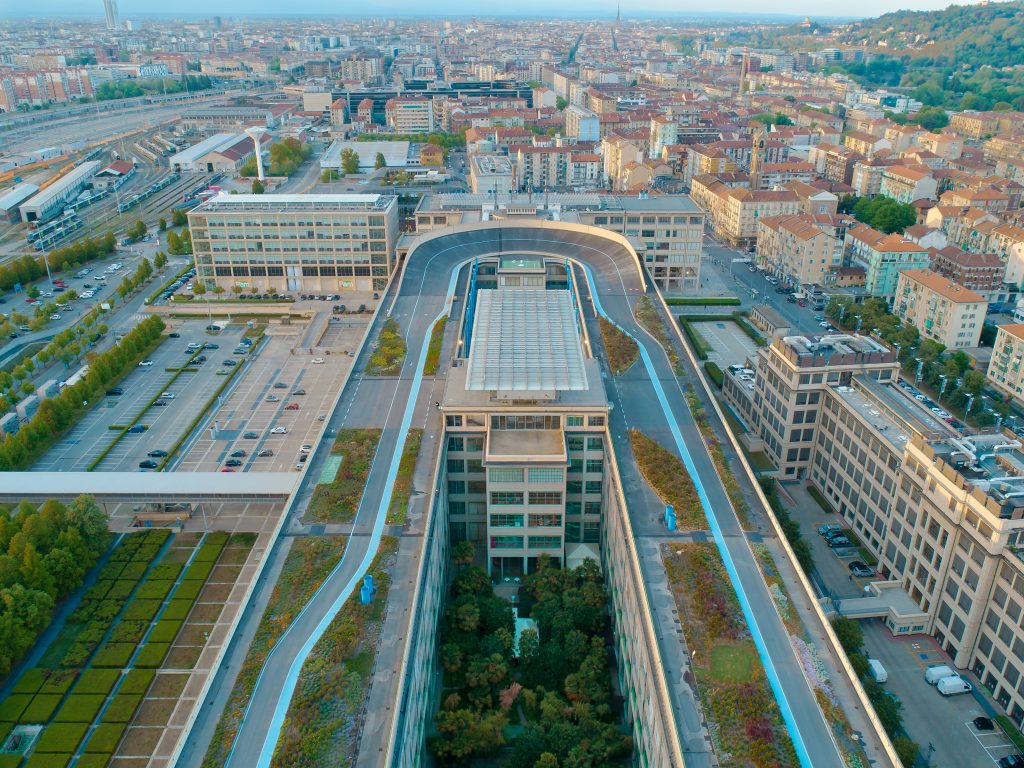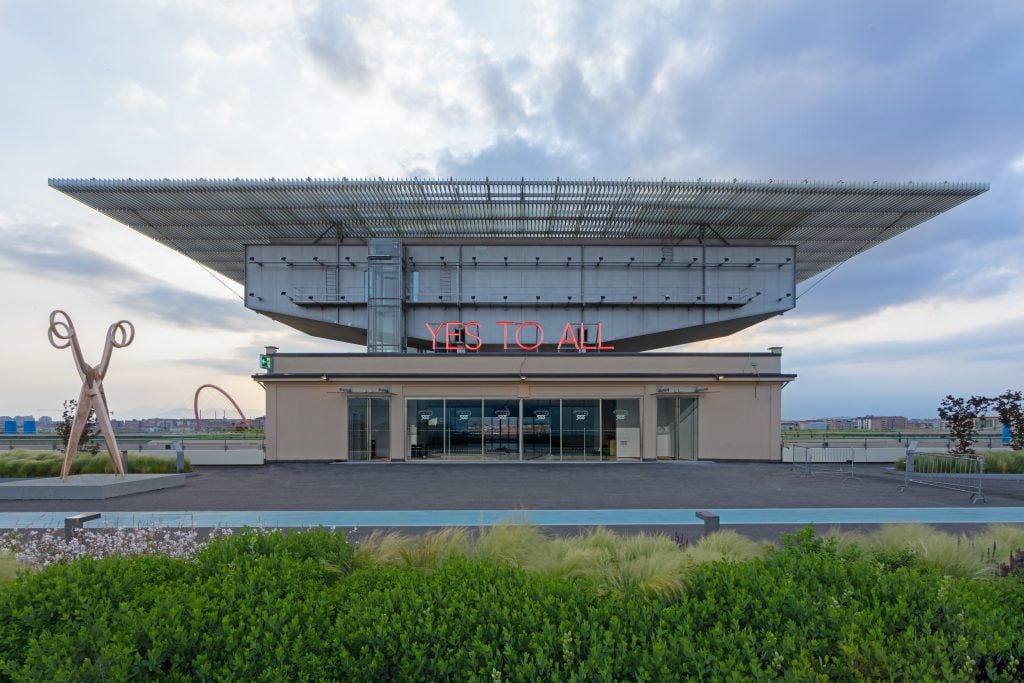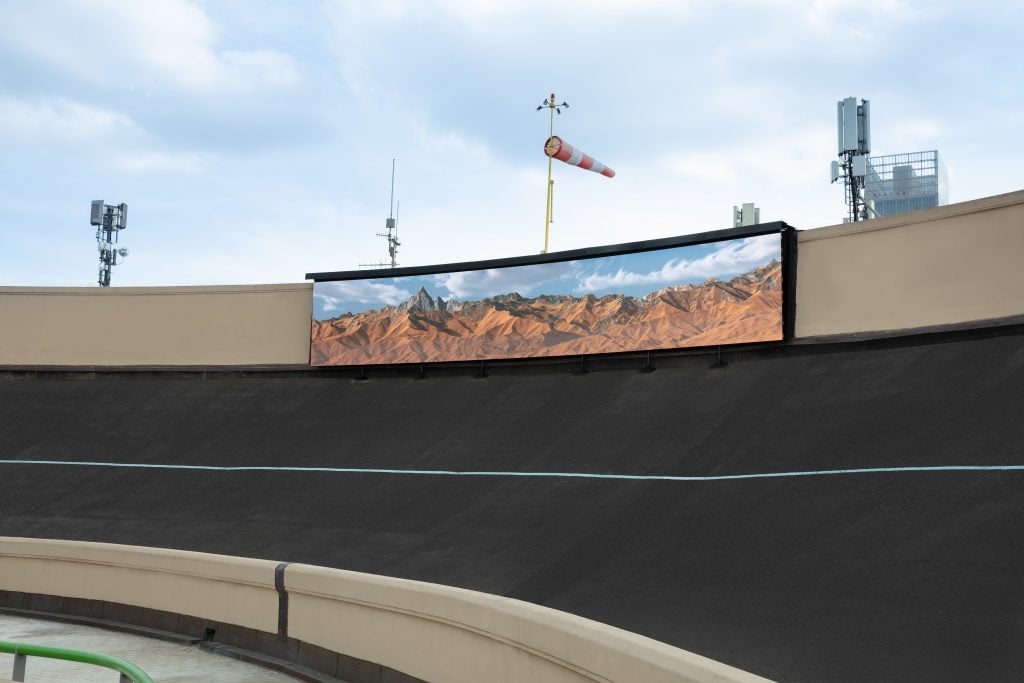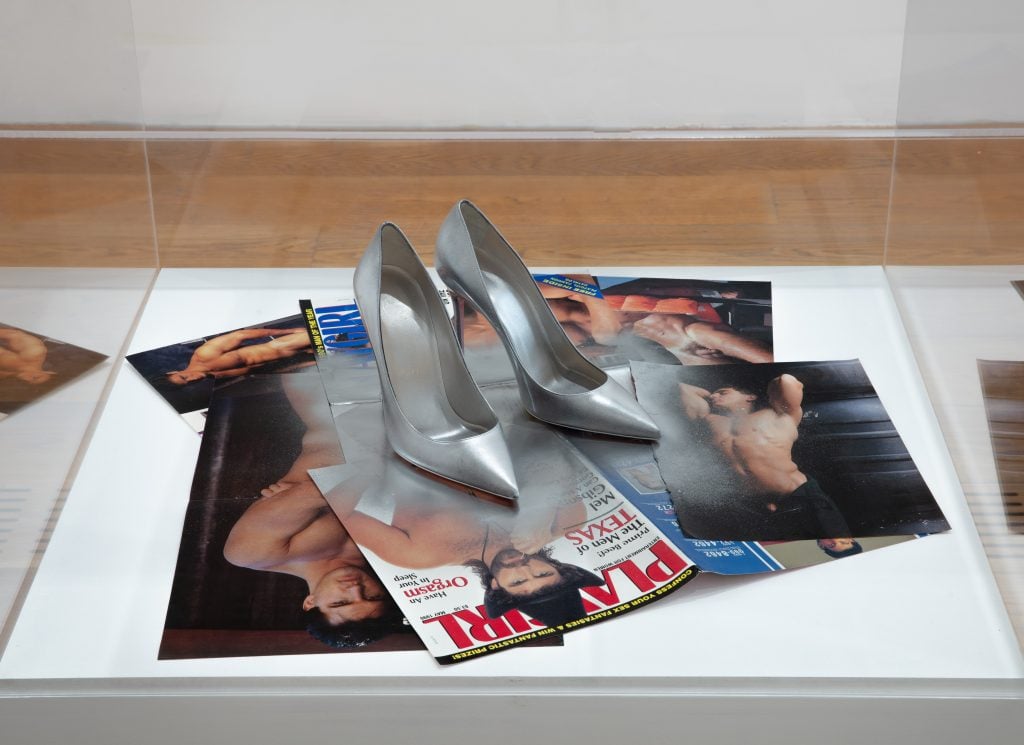Art & Exhibitions
A Raceway on the Roof of a Former Fiat Factory in Turin Is Now Home to a Lush Open-Air Art Space
The Pinacoteca Agnelli has opened La Pista 500, a new exhibition venue located on a historic track used to test drive cars.

The Pinacoteca Agnelli has opened La Pista 500, a new exhibition venue located on a historic track used to test drive cars.

Ana Vukadin

The Pinacoteca Agnelli art hub is nestled on the top floor of the Lingotto, one of Turin’s most recognizable buildings, a sprawling reinforced concrete and glass structure that is somewhat of a nightmare to navigate.
The former Fiat car factory, which shuttered in 1982, was once hailed by Le Corbusier as one of the most impressive sights in history. Indeed, it has a particular winning feature: a rooftop pista where new cars were once tested at high speeds along a pair of parabolic bends.
Four decades later, that test track has now been given a purpose once again. To marks its 20th anniversary, the arts institution has launched La Pista 500, a new public art space that takes over more than a kilometer of the old highway on its roof alongside a revamped program that seeks to redress some of the omissions of its in-house collection.

YES TO ALL by Sylvie Fleury (2022). Photo: Sebastiano Pellion di Persano
Some 40,000 verdant plants share space with the open-air exhibition space, which is now accessible to the public. Works by Shilpa Gupta, Louise Lawler, Valie Export, and Cally Spooner are on view as part of a relaunched program that seeks to highlight female practices. Resting on top of the new entrance to the museum to greet visitors is a work by feminist artist Sylvie Fleury, a large-scale installation exclaiming “yes to all” in red neon letters.
“The idea really started with the pista and transforming it into a park,” said the Pinacoteca’s president Ginevra Elkann. “We wanted the opportunity to not just be an isolated museum, but be part of a larger reality.” Since opening its doors in 2002, the Pinacoteca Agnelli, which is funded by Fiat, has had a primary mission to present a part of the esteemed private collection of the late Fiat founder Giovanni and his wife Marella Agnelli, who are also Elkann’s grandparents. By and large, though, the museum has remained relatively niche.
All three grandchildren, including Elkann, are on the museum board, presiding over the family’s impressive collection of artworks including works by Giacomo Balla, Henri Matisse, and Pablo Picasso.

Agnelli Collection. Courtesy Pinacoteca Agnelli, Torino. Photo: Mybosswas
Sarah Cosulich, the recently appointed artistic director of Pinacoteca, has been instrumental in setting a revamped agenda for the museum, including building out a more contemporary, international, and public-facing program. The dynamic and esteemed curator brought a wealth of experience from recent stints as artistic director of La Quadriennale di Roma and at Artissima art fair.
“I loved the idea of working with a museum that has a historic tradition with a collection, and opening it up to the contemporary without forcing it, but trying to create a bridge in the program,” said Cosulich. That is one of the reasons that the rooftop is accessible without needing to gain access to the main collection, and it costs a nominal sum of 2 euros.
In an impressively short time-span of six months, the all-female team brought together eight international artists for their inaugural outdoor project which is highlighted by two new commissions, including Cally Spooner’s mesmerizing DEAD TIME (Melody’s Warm Up) (2022), a sound piece where cello exercises from Bach’s Cello Suite No. 1 are interspersed with the sounds of cars; the work echoes around the car ramp which reacts like a soundbox.

Beneath My Feet Begins to Crumble (2022) by Mark Leckey. Photo: Sebastiano Pellion di Persano
Elsewhere, Mark Leckey’s remarkable video Beneath My Feet Begins to Crumble (2022) is mounted on monumental LED screen, which embraces the parabolic curve of the track and features shifting views of the Alps which transform from sublime snow-filled mountains into a post-industrial barren landscape.
“The artists were all fascinated by the history of this space—the fact that it’s a place of automobiles but also the place of a factory,” said Cosulich.
In a reflexively patriarchal country, with the lowest level of workplace gender equality in the European Union, gender politics have been put at the heart of the new Pinacoteca programming, and it is one of its most exciting aspects. Elkann and Cosulich chose to tackle the traditionally male narratives which are seeped into the history of such a building—not just in the car factory itself, but also in the Agnelli collection, which notably only includes male artists.
Cosulich said the new program will be “opening” the institution up “to presences not usually associated with the space.” This is indeed highly visible, especially in its inaugural solo exhibition, a wildly entertaining and razor-sharp retrospective of the pioneer feminist artist Sylvie Fleury. Its title, “Turn Me On” is a cheeky pun on the eroticism and the production of desire, as well as turning on the ignition a car.

View of Sylvie Fleury’s exhibition “Turn Me On.” Photo Credit: Sebastiano Pellion di Persano
On the fifth floor of the Renzo Piano-designed museum where the permanent collection finds its home, the commitment to subvert traditional narratives is also evident in its new show “Pablo Picasso and Dora Maar. A Dialogue with the Fondation Beyeler.”
The exhibition focuses on Maar’s significant influence on the male painter’s practice, starting off with Picasso’s portrait Homme appuyé sur une table (1915-16) hung in conversation with three works by the artist on loan from the Swiss Fondation Beyeler that all depict artist Dora Maar. On equal footing are Maar’s photographs. It is the first in a series of yearly exhibitions called “Beyond the Collection,” which will use a single work in the collection as critical tool to speak to the absences in the collection.
Elkann credits the female team for the important transformation taking place at the Pinacoteca Agnelli. “It’s creative, it’s caring, and it looks at the future, the community, and its needs,” she said of the new program. “Bringing together nature and art are essential to the soul. I think we really need that right now more than ever.”